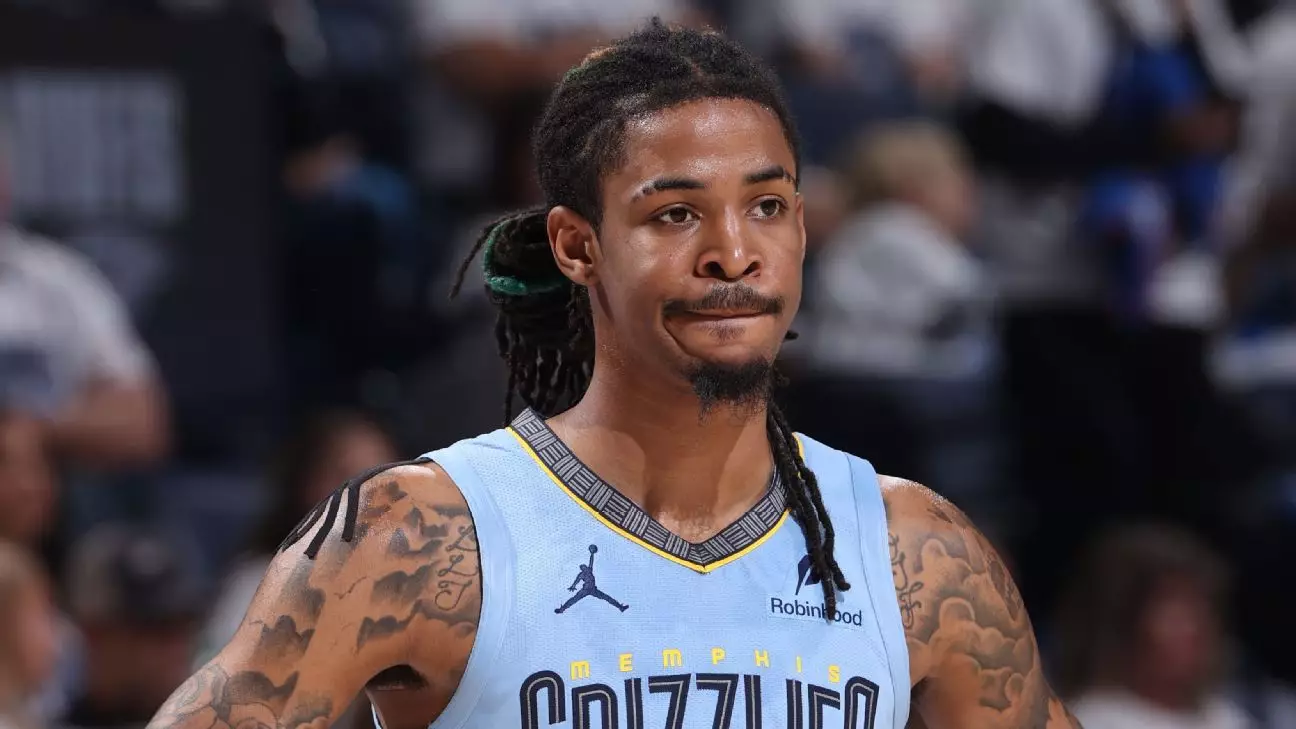In an unexpected turn of events, basketball fans and legal analysts alike have been closely monitoring the saga involving Memphis Grizzlies’ All-Star Ja Morant and teenager Joshua Holloway. What began as a friendly pickup game at Morant’s parents’ house in July 2022 has transformed into a legal drama that underscores the complexities of self-defense laws in the realm of sports. The dismissal of the lawsuit by a Shelby County judge highlights how legal interpretations can sometimes clash with public perception and sportsmanship values.
The incident that ignited this legal confrontation revolves around an altercation initiated by a basketball, which Holloway reportedly threw at Morant during a check-ball situation—a common practice in pickup games to signal readiness and competitive spirit. Morant responded with a punch that left Holloway with the impression of assault, leading to the subsequent lawsuit. However, the most significant aspect of this case is not merely the fight but the surrounding legal questions regarding self-defense and immunity that emerged from it.
Self-Defense and Legal Immunity: A Closer Look
Judge Carol Chumney’s ruling asserted that Morant acted within the boundaries of self-defense, which is particularly notable given the application of Tennessee’s “stand your ground” law. This law typically provides individuals the right to defend themselves without the obligation to retreat when they feel threatened, especially within their own homes.
The courtroom drama unfolded further as both parties presented conflicting narratives. While Morant positioned himself as the defender against an aggressive act, Holloway argued that he was the victim of unnecessary force. This dichotomy illustrates a crucial friction point in legal disputes involving sports figures: the line between competition and aggression can often blur, prompting questions about accountability and legality.
Chumney noted the responsibility of both individuals as prominent figures in their respective basketball communities, emphasizing their potential to either mentor young players positively or, conversely, to model poor conflict resolution. This commentary adds depth to the case, suggesting that the implications stretch far beyond the courtroom—the actions of both Morant and Holloway can reverberate across the sports community, where young athletes often look up to role models.
The Role of Witnesses: Credibility Under Scrutiny
Adding layers to the judicial process, the testimonies from witnesses proved pivotal in shaping the outcome. The defense called upon former NBA player Mike Miller, who confirmed that Holloway’s projectile basketball act catalyzed the confrontation. This perspective seemed to bolster Morant’s claim that he was defending himself against a perceived threat.
However, the credibility of Holloway’s account came under scrutiny. Judge Chumney pointedly remarked on the contradictions in Holloway’s testimony compared to those of other witnesses, ultimately bolstering her decision to dismiss the case. This aspect highlights an often-overlooked element of legal battles: the absolute necessity of reliable testimonies and the critical role they play in shaping judicial outcomes.
Public Perception Versus Legal Reality
While the legal system dissects the validity of claims, public sentiment often diverges significantly from courtroom deliberations. Fans of the sport may find it difficult to reconcile the image of a celebrated athlete with allegations of aggression, regardless of legal rulings. This reinforces the “trial by public opinion” phenomenon, where an individual’s reputation can be influenced by social media narratives and public discourse, independent of judicial outcomes.
The case raises broader questions about the nature of accountability in sports. As public figures, athletes must navigate the expectations of professionalism and composure, especially when faced with volatile situations. The Morant case exemplifies the constant balancing act that sports figures must perform between their roles as entertainers, leaders, and ordinary individuals who, under duress, may react impulsively.
Future Implications for Athletes and the Sports Community
Ultimately, the dismissal of Holloway’s lawsuit against Morant serves as a crucial touchpoint for discussions surrounding self-defense in sports and the responsibilities that athletes carry off the court. As both individuals continue their journeys in the public eye, their experiences may influence young athletes who aspire to not only excel in their sport but also embody values of respect, leadership, and maturity.
The profound impact of such incidents on youth culture in athletics cannot be overstated. As Morant and Holloway move forward, the hope expressed by Judge Chumney that they focus more on their athletic pursuits and less on legal entanglements resonates deeply—after all, sports should foster camaraderie and growth, not court battles.

